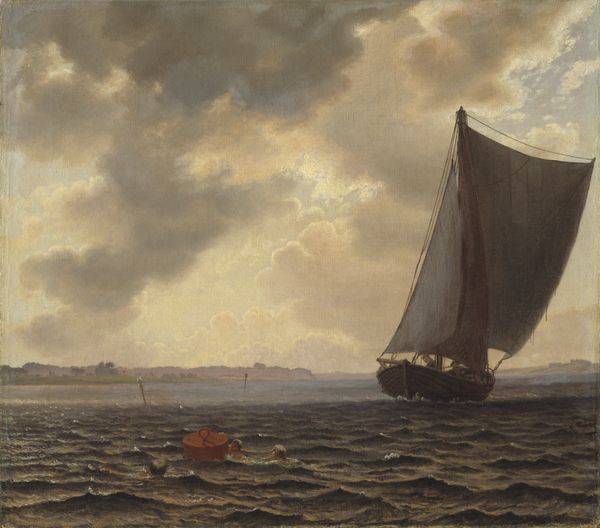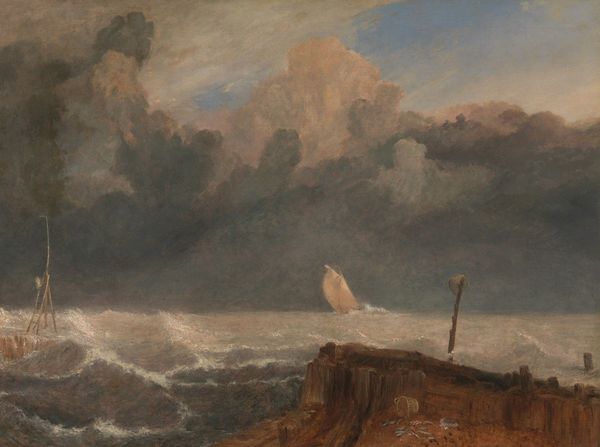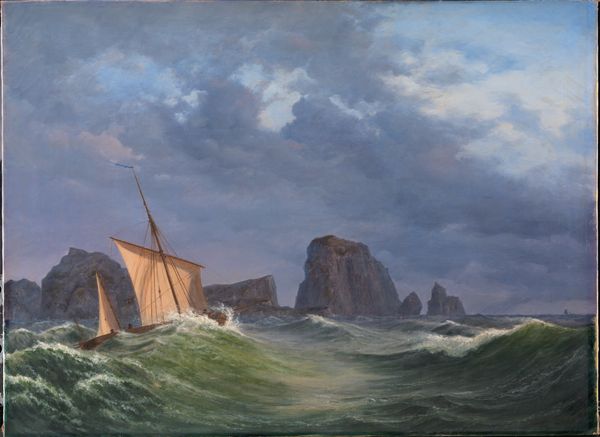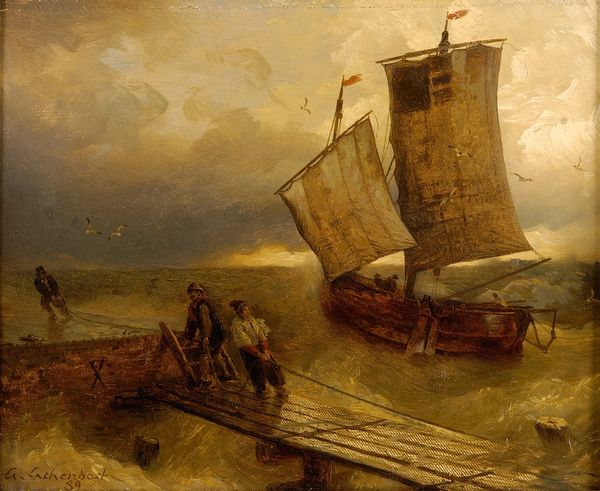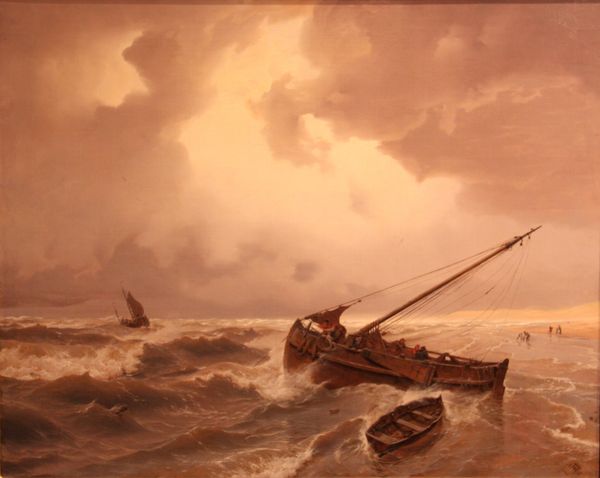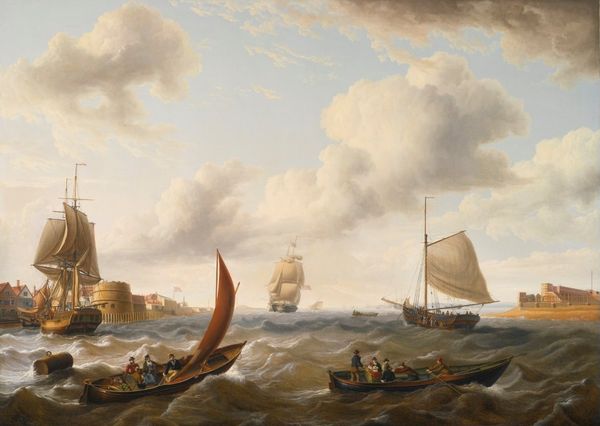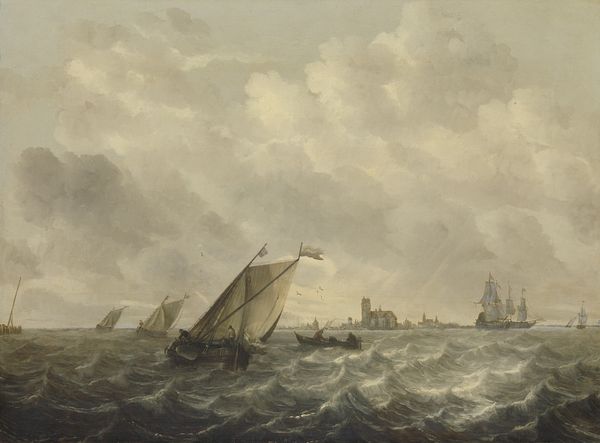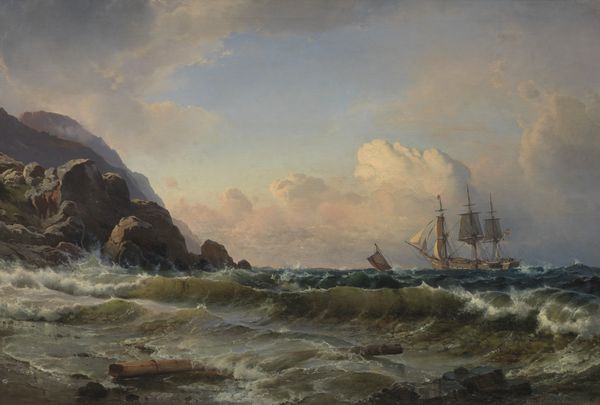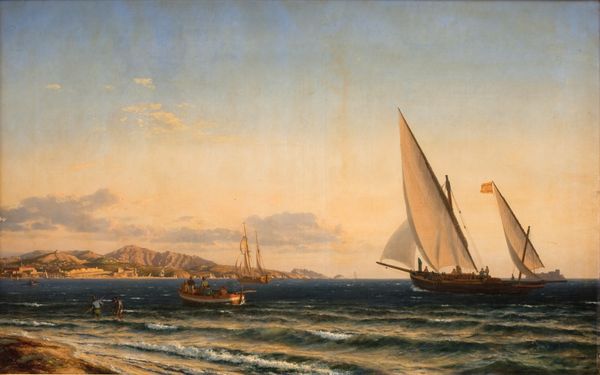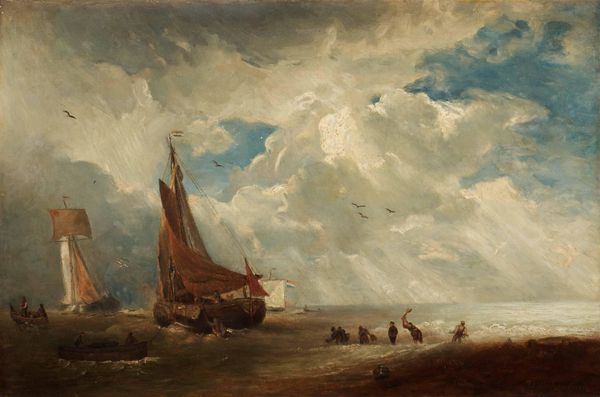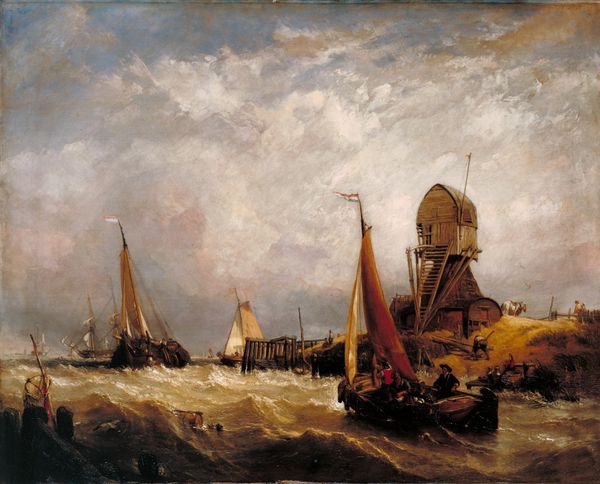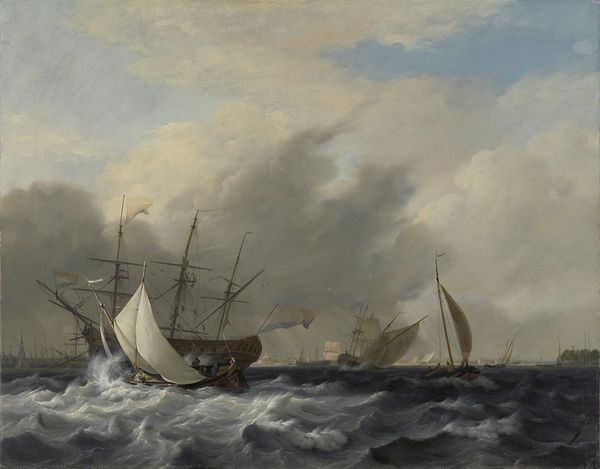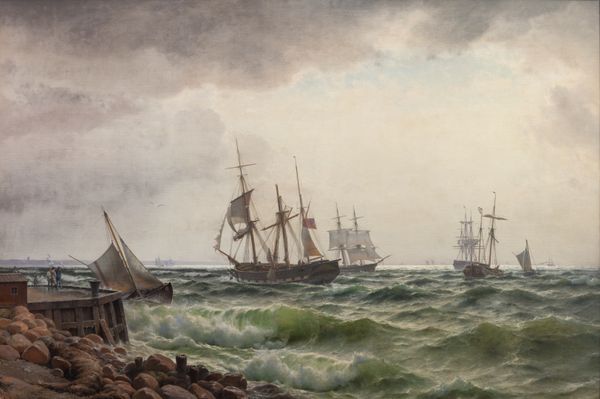
Copyright: Public domain
Curator: Andreas Achenbach, a towering figure in the Dusseldorf school, painted this compelling scene, "By the Dock," in 1855. He captures a moment of maritime life, painted with oil-paint and most likely "en plein-air". Editor: It strikes me as melancholic, almost unsettling. The churning sea and leaden sky weigh heavily. There’s a sense of impending storm, both literally and perhaps metaphorically. Curator: Absolutely, the Romantic spirit is strong here. The sea, often used to evoke the sublime, dominates. Achenbach, however, infuses it with a gritty realism, showing the daily lives tied to it. Dockworkers clamber onto the pier, dwarfed by its looming structure and the immensity of nature. Note the lone figure on the dock with his fishing spear; the symbolic associations with Neptune, ruler of the seas, become quite clear. Editor: The vessel hefts toward us! Beyond the immediate scene, distant ships and hints of a coastal town suggest larger commercial networks. One might also interpret this as an iconographical representation of human vulnerability, in view of elemental powers. Achenbach highlights humanity’s dependence on maritime trade and the unpredictable force that allows for that system to function. The rough realism clashes somewhat, however, with idealized themes typical to its artistic period. Curator: I think that the blend is part of the artist's intention. Achenbach consistently sought to capture the world as he observed it but wasn't averse to embedding subtle visual metaphors. It reflects the complex political economy of the time as industrial and imperial ambitions surged. We’re seeing the transformation of these maritime towns into global hubs, even if the reality was precarious for the ordinary worker. Editor: True. There is the implication of the city in the far distance! Those laborers’ relationship with nature differs from, say, an idealized peasant from the era of classicism. This picture reminds us that they do not stand apart from society. But this seascape may equally be a stand-in for psychological conditions of alienation that were prevalent. In a rapidly changing social reality, are we to interpret symbols of isolation or rather of solidarity and communal labor? Curator: These ambiguities capture modernity's unsettling features during the 19th century, I’d say. What appears natural becomes increasingly managed and commodified; what is individual is enmeshed with social forces. Editor: So, beyond the stormy surface, lies an exploration of profound human and societal themes. Thank you for that valuable historic reading! Curator: My pleasure!
Comments
No comments
Be the first to comment and join the conversation on the ultimate creative platform.
